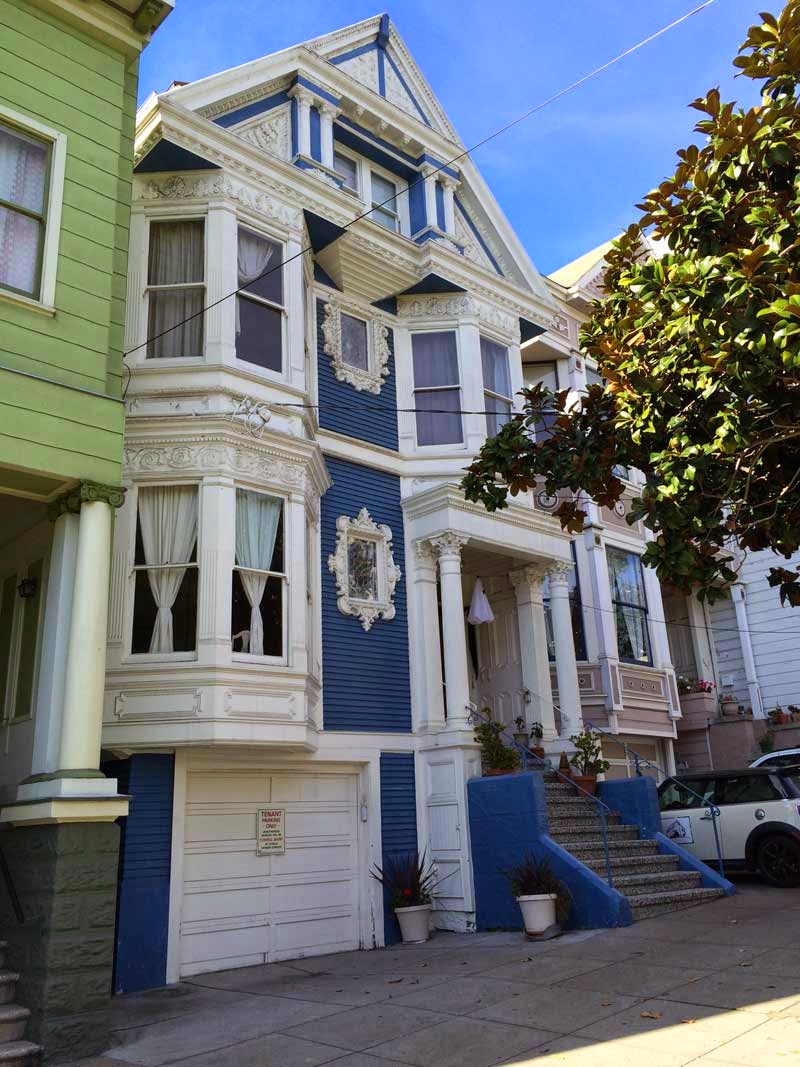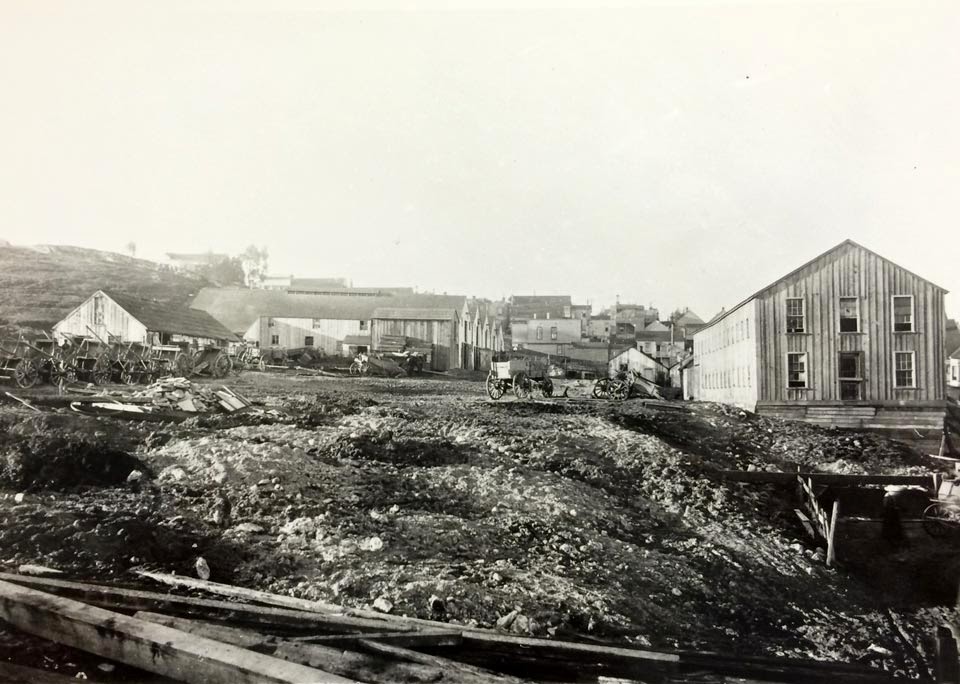
He may have a park, an avenue, and a triangle named after him, but how much do you really know — if anything — about Colonel Victor Duboce?
Today being Veterans Day, join us as we remember this local war hero, former supervisor, and area namesake.
Early Years
Victor Donglain Duboce was born in Springfield, Illinois on September 6th, 1856. He spent the first 20 or so years of his life in Illinois, and the period was apparently unremarkable. The only detail on record was a brief marriage at the age of 17 to a woman named Harriet, a union which produced a son named Franklin. The marriage quickly soured, however, and the couple divorced. Victor Duboce would later remarry, though Franklin would be his only child.
By his early twenties, Duboce had moved to San Francisco. There, he enlisted as a soldier at the age of 22, and quickly rose through the ranks to corporal, then sargeant, then captain, then major of various brigades.
"The talent for organizing was his," the San Francisco Call later wrote in a profile of Duboce. "Experience and close and intelligent attention to details gave him prominence as a useful soldier."

Victor Duboce, from SF Municipal Report, 1900. Date of photograph unknown.
The Spanish American War
In 1898, war erupted between the United States and Spain.
Though the conflict was fought primarily over the fate of Cuba, much of the action played out in the Pacific. Spain had ruled the Philippines for more than 300 years, and had an ample naval presence there. The U.S. had a strong Navy of its own, but its Army at the time was weak, consisting of just 28,000 men. To boost its ranks to fight the Spanish, the U.S. mobilized national guard units and called on volunteers.
One of those who answered the call was Victor Duboce, then commander of the First California Volunteers.
Duboce had been working in various private sector jobs over the years before the war. He had stints at a real estate agency, a whaling firm, and a post office, among other businesses. When the Spanish-American War broke out, he was nearly 42 — practically ancient by military standards. Yet he knew what he had to do.
"How could I respect myself if I failed to go?" the Call quoted Duboce as asking a friend. "I know that I have some service in me. True, there is no insurance company that would take me as a risk — certainly I will not live to return — but I am going."
Duboce fought in Manila in July and August of 1898, and proved himself crucial to the war effort. As the Chronicle later wrote, one of Duboce's tasks was surveying the Philippines and creating a map of its terrain.
"He reconnoitered the entire stretch of the peninsula, located general outlines of the Spanish position and trenches of the opposing natives, with roads and swamps and native villages, in all giving the topography of the country... Colonel Duboce was given command of the first battalion and ordered to establish Camp Dewey, so his was the first flag raised on the mainland of Luzon... When in action Colonel Duboce never spared himself, and when the history of the campaign is written there will be an honored place for him."
The Spanish-American War only lasted three months. When the Americans won, they took brief control over the Philippines, much to the dismay of the Filipino natives they had just liberated. This led almost immediately to a three-year skirmish known as the Philippine-American War. Duboce remained in the Philippines and continued fighting.
It was in the course of this second war that Duboce performed his most famous military act: storming and setting fire to a church filled with enemy fighters in the Manila suburb of Paco.
As the Chronicle reported:
"After the oubreak of the Filipinos the insurgents were making use of a church as a fort to fire upon the American troops. It was exceeding difficult to dislodge them. Finally Colonel Duboce called for a few volunteers, then, leading his men, charged the church in the face of a hot fire, and spilling coal oil, set fire to the edifice. In this way the sharpshooters were driven out."
Duboce was made a colonel on May 8th, 1899. He continued his campaign in the Philippines into the summer, at which point he returned to San Francisco.
Upon his return to the city, Duboce was treated like a hero. He marveled at the response he and his fellow soldiers received.
"The reception that has been given us is beyond the power of words to describe. It is simply wonderful. We have been greeted as soliders returning home have never been greeted before, and in behalf of the regiment I cannot say too much in appreciation of it all."
Friends encouraged Duboce to run for office, and he did. In November of 1899, he was elected to the Board of Supervisors. It was his first political position, and would be his last.
Duboce's Death
Duboce's premonition that he would not return from the Philippines had proven untrue. However, he did contract some unspecified malady while overseas, an illness from which he never recovered. He spent the last four months of his life at home at 637 Baker Street. It was there that he ultimately passed away on August 15th, 1900, with his wife and a few friends by his side. He was 43.

637 Baker Street, just south of McAllister.
Upon Duboce's death, the Board of Supervisors passed a resolution declaring:
"Resolved, That by the death of Colonel Duboce this board has been deprived of an intelligent and public spirited member, one who had at heart the welfare of his country, his State and the city of San Francisco."Resolved, That in the opinion of this board, the example of our late esteemed fellow-member in responding in common with his fellows of the First California Volunteers to the nation's call for defenders in the late war with Spain, at great personal sacrifice, demands our highest respect and admiration — we can have no fear of the safety and perpetutiy of our institutions when California and its sister States breed men of such heroic mold."
Duboce's fellow supervisors draped his chair and desk in black, and placed an American flag and sheaf of wheat on top.
"Colonel Duboce needs no eulogy from me," one supervisor said at the time. "His patriotism and valor need no mention. His name will go down in history as that of one of the first to answer the call of the President for volunteers, one of the first to be mustered into the service during the late war, and one of the first to land on the soil where the struggle was carried on."
Duboce's funeral took place on August 19th, 1900, and it was a major spectacle.
After his death, Duboce's body lay in state for three days. It was then escorted via an elaborate procession from the Mechanic's Pavilion (a huge venue where the Bill Graham Civic Auditorium stands today) to the Presidio. The caravan included soldiers and members of the Masonic order, followed by platoons of police, family members and relatives, members of the Board of Supervisors, city and state officials, and finally, the public in horse-drawn carriages.
"Rarely if ever before in this city has there been such an outpouring of troops, fraternal organizations, public officials and citizens generally," the Chronicle noted.
The procession eventually arrived at the Presidio, where Duboce was laid to rest. His tombstone can still be found in the National Cemetery there today.

Duboce Park
Less than a week after Duboce's death, a neighborhood group, the New Park Improvement Club, suggested naming a park for the departed colonel. There was a plot of land between Scott and Steiner that had been slated to house a hospital for nearly four decades, but got caught up in financial and legal issues. During this 40-year period of uncertainty, the land didn't exactly go unused — it hosted an Italian vegetable garden, for example, and also served as a dumping ground for rocks and manure.

Duboce Park site, date unknown. SF Public Library Historical Photo Collection
The New Park Improvement Club raised money to clear the site and establish a proper park. Upon Duboce's death, the Club petitioned the Board of Supervisors to name the park after the deceased colonel, via the following epic sentence:
"Desiring to honor and perpetuate the name and memory of the brave and heroic Colonel of the First California Regiment, Unites States Volunteers, Victor D. Duboce, who led and fought with our troops in the Philippines, during which time he contracted a disease, and, after suffering for many months, has recently passed to his reward, therefore, remembering his serves to his country, his loyalty to the flag, his fidelity to his trust, his faithfulness as an honored Supervisor of this city and his uprightness as a citizen of San Francisco, this club has by unanimous vote requested that your honorable body, with the consent of the honorable Board of Park Commissioners, shall name this public square Duboce Park."
The Board agreed not just to name the park, but to re-designate its southern border, formerly known as Ridley Street, as "Duboce Avenue."
Duboce Park was formally dedicated on September 9th, 1900. The mayor, chief of police, a military band, soldiers, and an estimated 1,500 people gathered around a new flagpole for the ceremony. The mayor remarked:
"It is better as a park than as a hospital, for which it was originally intended, for the one conduces to health of the community, while the most the other can do is to restore it. The people have been wise enough at this time to set apart for a park this piece of land, which at the present time looks as if it had been the scene of a battle among the gods in which they threw huge rocks at one another."
The band played the Star Spangled Banner, the American flag was raised, and that was that. In the months following the ceremony, the park was cleared and landscaped, creating idyllic scenes like the one below — not altogether different from how it looks today, dogs notwithstanding...

Duboce Park, 1905. SF Public Library Historical Photo Collection
And there you have it — the story of a man who only really rose to prominence in the final two years of his life, but whose achievements in battle and subsequent untimely death made him an instant San Francisco legend. Today we salute you, Victor Duboce.









